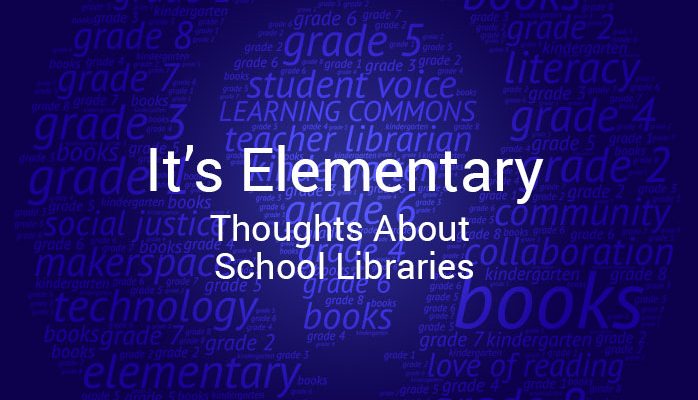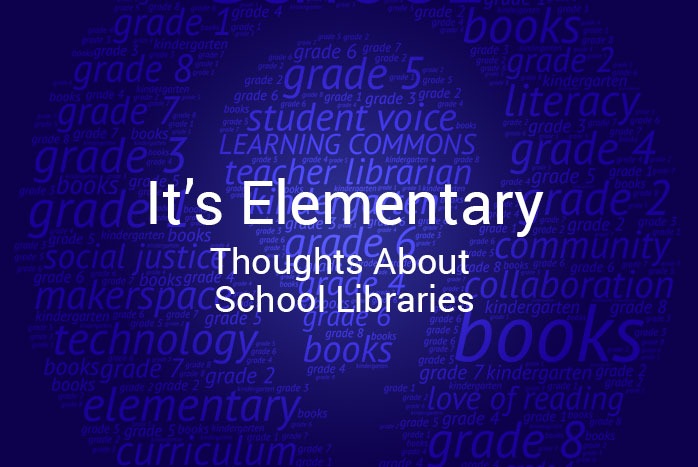I am intrigued with the work of fabulous secondary teacher librarian, Jonelle St. Aubyn. Her practice is both familiar and innovative.

The Case for Free Flow Book Exchange
In education we often use IF, THEN statements to guide changes to our programming and practice.
IF I change this, THEN my students will… (sort of a predictive cause and effect stance).
Sometimes these are formal, written statements that we share with key stakeholders in our buildings. Other times they are scribbles in our own day plans. And sometimes they are simply reflective thoughts in our own minds.
The power of these statements for me is always the idea that one, small change can have a long-lasting positive impact on the children and families we serve.
The first time I was a teacher librarian I thought I loved it. That first year in the role I was so excited, proud and grateful for the phenomenal opportunity my administration had given me. I loved buying books, sharing my love of books, reading with the kids and optimistically assuming every teacher in the building would be thrilled to co-teach often.
For a wide variety of reasons, this Utopian vision of the role of a teacher librarian did not come to fruition for me.
Somehow I knew I would always go back to a school library position but, I knew that I needed to re-envision the library learning commons and my role within it. With an unbelievably supportive administrative team we ventured to try something different for our learning commons when we opened our new school in fall 2015.
Of all the changes we made and all the learning we have done so far, I feel that one change has been particularly powerful. To put it in the terms of an IF, THEN statement…
IF I implement a completely free flow book exchange model, THEN students will have greater, more frequent and meaningful access to the books, the learning environment and the teacher librarian.
So began the case for free flow book exchange. In a building that includes learners ranging in age from 3 to 14 developing an independent free-flowing daily book exchange model might seem impossible. But I can attest to the fact it is not only possible but ideal!
What it used to look like:
- In the past, I spent much of my time booking primary (Kindergarten to grade 3) book exchange periods.
- They stayed the same each week and offered only one day the kids could access books.
- If you were absent on library day or forgot your book you often had to wait an entire week to get access again.
- The period usually included a read aloud with me and then a scramble for books and a long wait in line to sign them out.
- Often younger students were restricted to only one book and specific sections of the library.
How it impacted learning:
- This impacted my availability for more meaningful co-teaching opportunities.
- When older students dropped by during these periods it often meant I could not offer them much attention or support in their library use.
- I spent much of my fall start up time struggling to schedule everyone which meant it took days to get the library up and running.
- Often I felt like the classroom teacher and I were both frustrated with the lack of connection to their classroom practice and how much time we spent dealing with overdue books rather than literacy instruction.
- I was unable to connect with each student in order to help support their literacy development.
- The younger students relied on a great deal of teacher direction to both select materials and sign them out.
What it looks like now:
- There are NO whole class book exchanges for any grade.
- Any child in the school can come to the library during the instructional day – every day if they choose to do so.
- Partners or small groups of students come throughout the day and independently return, select and sign out books.
- Most of our Kindergarten students come in small groups but, if needed an educator can accompany them now that all K classes in our school are full day and have at least two educational professionals.
- Every child in the school can have two books out at any time and they can select any text they desire.
How it impacts learning:
- I am less focused on book in/book out and can offer more meaningful co-teaching opportunities.
- Regardless of age or grade I can connect with each student if needed.
- The library was open for book exchange the very first day of school. (And kids signed books out!)
- Classroom teachers work to make the library learning commons an extension of their learning environment.
- I am able to get to know the students as readers and better understand their literacy needs as time progresses.
- The students are developing and demonstrating an incredible amount of independence and self-regulation.
Don’t get me wrong – there are some gloriously chaotic moments in this model and new challenges we adapt to each year. I would be a liar if I did not admit there are some educators, classes and students that I still need to get on board. (And that keeps me up at night often!)
However, there are two key understandings that remind me to stay the course.
1. I trust children. I always have and I always will. And if I trust them to navigate free flow book exchange and make their own literacy choices, then they know that I trust them and that may remind them to trust themselves.
2. It all comes down to the math. In my old model kids could have a maximum of 2 new books per week. Now, if they choose to do so, they can have 2 new books per day! Read any research on literacy development and it will somehow state that the more you read (or are read to) the greater the growth in literacy skills. So the potential for 10 different books to go home with a child each week seems to be the best mathematical equation I have ever seen!
Jennifer Brown is the Teacher Librarian at the Castle Oaks Public School in the Peel District School Board. It’s Elementary: Thoughts About School Libraries is a regular column on Open Shelf. Jenn can be reached at jennifer.m.brown [at] peelsb.com and by following her Twitter account @JennMacBrown.
